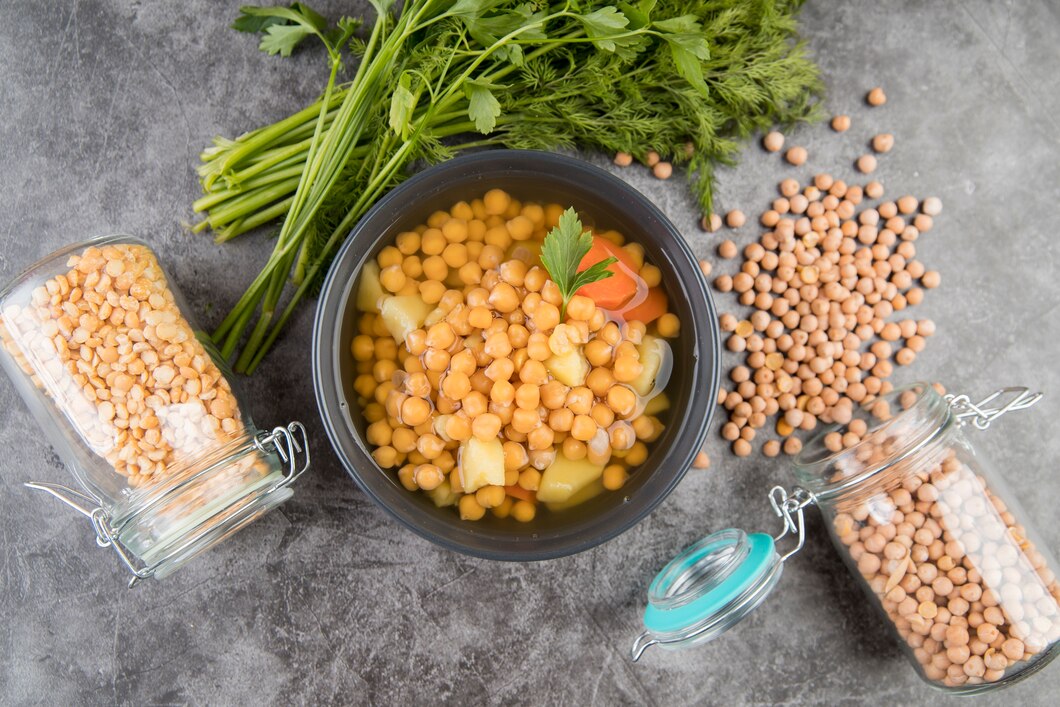Soy is a common ingredient in many diets due to its versatility and nutritional benefits. However, for individuals with hormone-sensitive conditions such as estrogen receptor-positive breast cancer or thyroid issues, soy can be problematic due to its phytoestrogen content. Luckily, there are many alternative foods that can replace soy while maintaining a balanced and nutritious diet. Here are five foods you can substitute for soy in hormone-sensitive conditions.
1. Chickpeas
Why They Work:
Chickpeas, also known as garbanzo beans, are a great source of plant-based protein and fiber. They have a mild, nutty flavor that makes them versatile in various dishes.
How to Use:
- Hummus: Blend cooked chickpeas with tahini, lemon juice, garlic, and olive oil to make a delicious dip.
- Salads: Add cooked chickpeas to salads for a protein boost.
- Curries and Stews: Use chickpeas as a meat substitute in curries and stews.
2. Quinoa
Why They Work:
Quinoa is a complete protein, meaning it contains all nine essential amino acids. It’s also gluten-free and packed with vitamins and minerals.
How to Use:
- Salads: Use cooked quinoa as a base for salads.
- Breakfast: Substitute quinoa for oats in breakfast porridge.
- Side Dish: Serve quinoa as a side dish instead of rice or couscous.
3. Lentils
Why They Work:
Lentils are rich in protein, fiber, iron, and folate. They have a hearty texture and can absorb flavors well, making them a great substitute for soy-based proteins.
How to Use:
- Soups: Add lentils to soups and stews for a protein-rich meal.
- Burgers: Make lentil patties as a plant-based burger option.
- Salads: Toss cooked lentils with vegetables and a tangy dressing for a nutritious salad.
4. Almond Milk
Why They Work:
Almond milk is a popular non-dairy milk alternative that’s low in calories and free from soy. It’s a good source of vitamin E and can be fortified with calcium and vitamin D.
How to Use:
- Smoothies: Use almond milk as a base for smoothies.
- Baking: Substitute almond milk for cow’s milk or soy milk in baking recipes.
- Coffee and Tea: Use almond milk in coffee, tea, or over cereal.
5. Hemp Seeds
Why They Work:
Hemp seeds are a complete protein source, rich in omega-3 and omega-6 fatty acids, and have a nutty flavor. They are versatile and can be used in many dishes to replace soy-based products.
How to Use:
- Smoothies: Add hemp seeds to smoothies for a protein and nutrient boost.
- Salads: Sprinkle hemp seeds on salads for added texture and nutrition.
- Baking: Incorporate hemp seeds into baking recipes for extra protein and healthy fats.
Tips for Transitioning to Soy-Free Alternatives
- Read Labels: Many processed foods contain hidden soy. Be sure to read labels carefully when shopping.
- Gradual Changes: Transition to soy-free alternatives gradually to allow your palate and digestive system to adjust.
- Balance Your Diet: Ensure you are getting a balanced intake of proteins, healthy fats, and carbohydrates from a variety of sources.
Nutritional Considerations
- Protein Intake: When avoiding soy, ensure you are getting enough protein from other plant-based sources.
- Variety: Incorporate a wide range of foods to ensure you are getting all essential nutrients.
- Consult a Professional: If you have a hormone-sensitive condition, consult with a healthcare provider or nutritionist to tailor your diet to your specific needs.
For those with hormone-sensitive conditions, avoiding soy can be crucial for managing health. Fortunately, there are plenty of nutritious and delicious alternatives available. Chickpeas, quinoa, lentils, almond milk, and hemp seeds are excellent substitutes that can help you maintain a balanced diet without soy. By incorporating these foods into your meals, you can enjoy a diverse and satisfying diet that supports your health and well-being.








